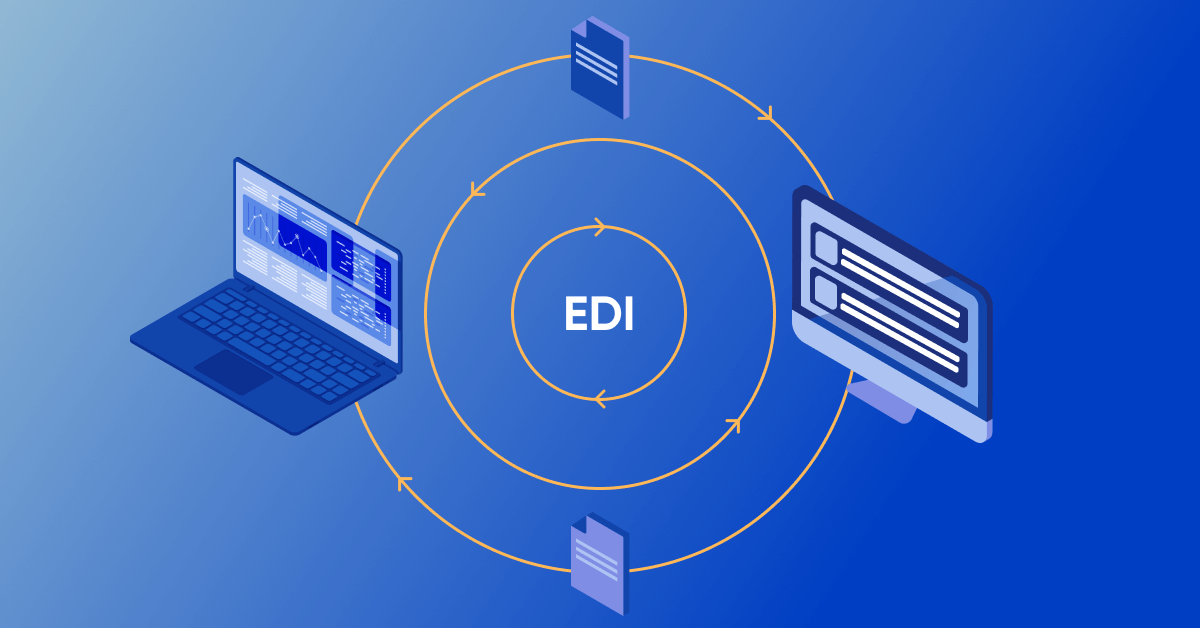Wholesale - EDI - Part 2
 Fulfil
Fulfil
What to expect during the implementation of EDI, technology partners in the space you should consider, and the long-term management of EDI connections.

Introduction
In last week’s article, we introduced EDI as a method of communicating information for certain wholesale customers. We also discussed basic terminology, and when it makes sense to consider implementing an EDI strategy. While it’s possible to maintain EDI-based relationships with wholesalers by manually submitting the required documents, for the purposes of this article we will assume that you have the sales volume to justify an EDI integration.
With the basic background information covered, this week’s article will give you specific, tactical information on what to expect during the implementation of EDI, technology partners in the space you should consider, and the long-term management of EDI connections.
Implementing EDI
If you ask anyone who has gone through the EDI implementation process what their experience was like, they will likely tell you that it’s a difficult, cumbersome process that is reflective of the technology’s age. That said, technology aside, any integration effort that requires the coordination of multiple parties from different companies can be challenging. With eCommerce EDI integrations in particular, this is especially true as there are typically 4 parties involved:
1. Merchant
2. Trading Partner
3. EDI technology intermediary
4. ERP (or OMS/IMS/WMS)
In last week’s article, we discussed the 5 most common documents that are used in EDI integrations for most eCommerce merchants, which cover sending and receiving the necessary information to complete the wholesale order.
For each of these documents, there is a rigorous testing process that is required to ensure that every individual piece of information that is communicated on each EDI document is in the exact expected format. Throughout the implementation process, each of the parties listed above is required to sign off on each individual document, and even just one non-responsive party can result in blocking the project.
To help make this process easier, it’s important to find a capable integration partner that can help with the implementation and ongoing maintenance of any EDI connection. In terms of timeline, you should anticipate a bare minimum of 4-6 weeks per trading partner to get the integration fully live. However, this timeline can easily be lengthened by additional documents being added to the scope of the integration and communication delays between parties. Therefore, it’s important to be fully aligned on the scope of the project and expected communication channels prior to kicking off the project.

Technology Options
Unlike API-based connections, which can communicate information in real time bidirectionally, EDI relies on a centralized middleware which receives information from both the Merchant and the Trading Partner in batches. This means that there is less room for error during the communication process, as EDI as a technology is extremely rigid and inflexible when it comes to error handling.
There are many different technology options available to merchants who are considering an EDI integration, and it’s important to research which platform will be the best fit for your business. That said, they can effectively fit into 3 different categories:
1. Full Service
2. Modern (API-based)
3. Custom (XML-based)
Full Service
Working with a ‘full service’ technology partner (like SPS Commerce) is one of the most common ways for eCommerce brands to get their EDI integrations off the ground as quickly as possible. This is a good choice for merchants who do not have any prior experience in EDI integrations, as the technology partner can take you from zero to one through a guided onboarding process. Additionally, SPS Commerce has a UI-based manual interface for handling individual document transactions if you’re not interested in building a full integration. However, a full service partner is not necessarily the most economical option, as the prices can be higher than some of the other options, depending on the level of assistance needed during onboarding.
Modern (API-based)
EDI as a technology was developed in the 1960s, in a pre-internet era, and is still used by some of the largest retail companies in the world. It’s a necessary evil that is not going away any time soon, and rather than trying to avoid it, some companies are building modern infrastructure around the archaic standard. Specifically, Stedi and Orderful are two companies in the space that are taking massive strides towards modernizing this ecosystem, by building API-based integration option alternatives.
While it can take a little longer than Full Service, this modern option can be a good choice if you’re looking for the easiest, cheapest way to get an EDI integration off the ground. That said, it does require you to have a technical developer team to work with the APIs. However, if you do have developer resources to dedicate to the project, you’ll be rewarded with the highest level of control, a more dynamic setup, and generally more direct control over the way the integration operates.
Additionally, there are other (more specific) solutions that are good for certain situations - for example, DSCO is designed specifically for merchants who are focused on dropshipping via EDI. This means that they are accepting orders from retailers via EDI, but fulfilling these orders themselves by shipping the product directly to the customer.
Custom (XML-based)
The last option is the least popular, and one that is not recommended. Instead of using established partners like SPS, or using a modern API alternative, some merchants will look into building their own custom XML-based integration for their EDI Trading Partners.
While this would absolutely be the cheapest option in terms of raw dollars in, it’s an incredibly challenging undertaking that requires you to host your own intermediary server, own 100% of the ongoing maintenance, and overall has the highest complexity and longest timeline of any of the options listed above.

Maintaining EDI Connections
Once you’ve selected your technology partner, gone through the implementation process, and come out the other side with a shiny new EDI integration, it’s important to understand the long-term implications and requirements of an EDI connection.
Specifically, something that a lot of merchants don’t realize is that there are recurring costs associated with maintaining EDI integrations (regardless of the technology option chosen). Because of the multi-party nature of the integration, if any one party has something that changes, each of the other parties will likely need to update the integration to reflect this. This can be as simple as adding an additional field to an existing document, changing the format of a certain type of data, or even adding an entirely new document. It’s important to discuss with your technology partner to understand the total cost of your EDI integration, including future costs, as well as what is covered within the scope of maintenance.
Overall, this means that it’s important to evaluate on an ongoing basis the amount of volume that you’re processing through these integrations, as well as if they align with your big picture strategy for growth, because otherwise they can slip under the radar as a cost center.
Looking Ahead
In conclusion, implementing EDI for eCommerce merchants can provide numerous benefits despite the limitations of the legacy standard. With the various technology partner options available, merchants can choose the solution that best fits their needs, budget, and timeline. However, it is important to also consider the ongoing maintenance and support required to ensure smooth and continuous operation. To learn more about how Fulfil helps merchants implement EDI and scale their wholesale operations efficiently, book a demo with our team.
Tags:

Fulfil
Fulfil is the AI-native ERP built for modern Shopify and DTC brands. No consultants. No middleware. No surprises. Connect your sales channels, warehouses, accounting, and fulfillment in one system. Set up in weeks, not months.